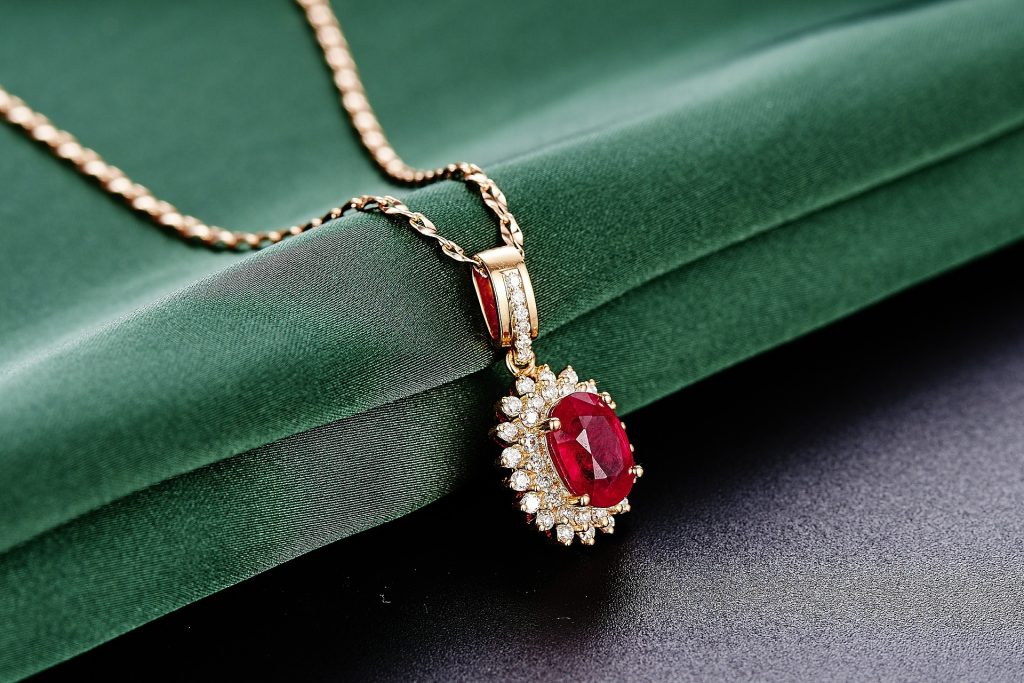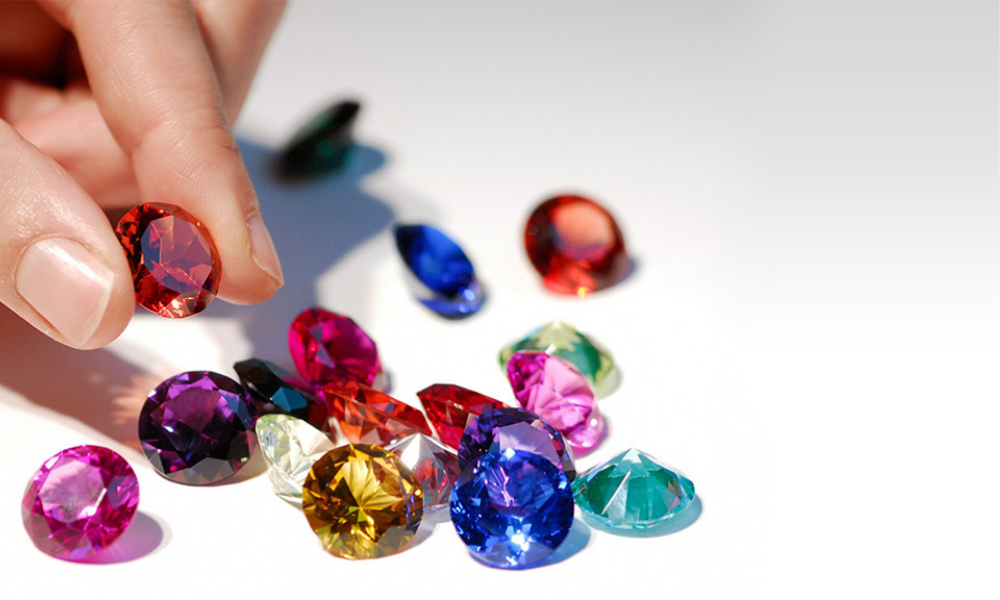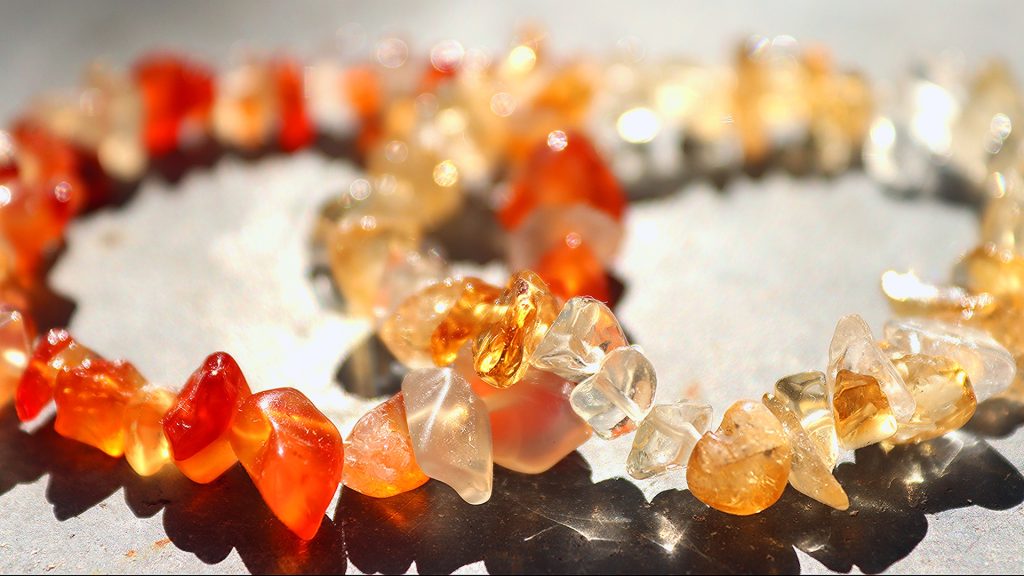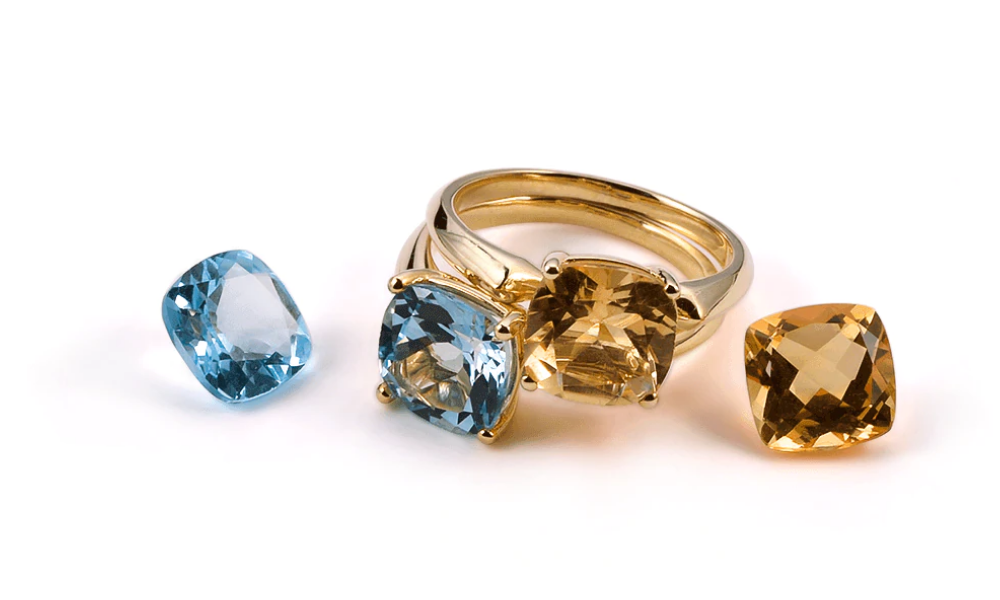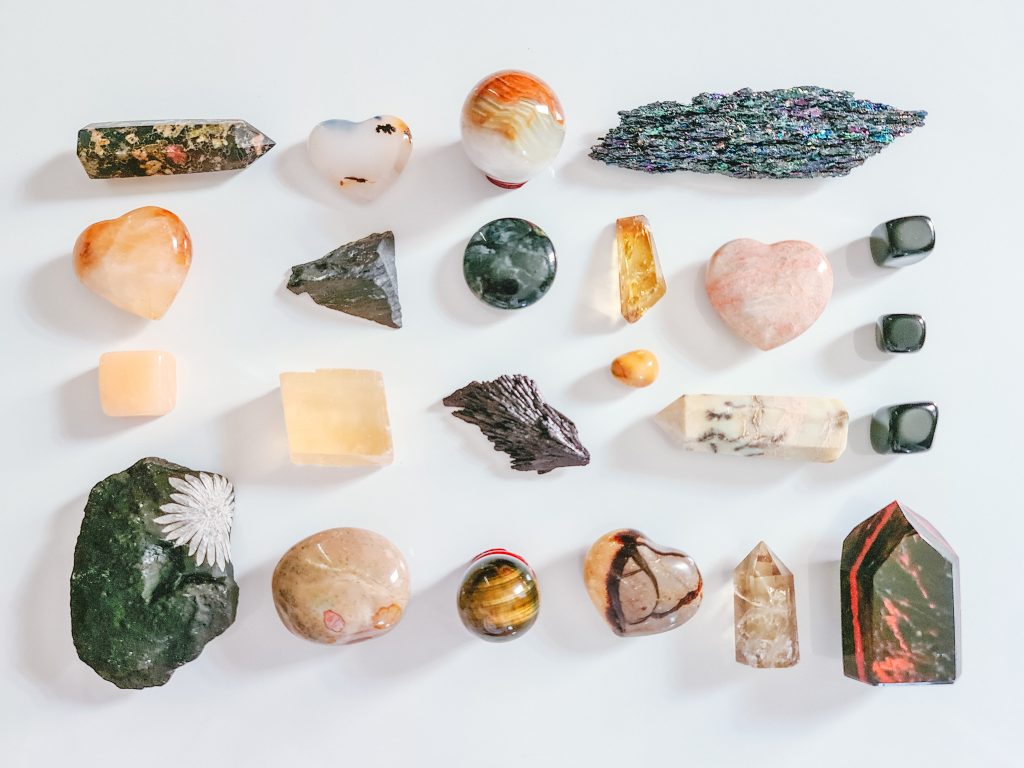Are you wondering what red gemstone is called? You are not alone. There are many other gemstones, but red tourmaline is perhaps the most popular. It has a hardness rating of seven to seven and is suitable for most types of jewelry. The color of this gemstone is incredibly versatile and can be found in virtually any shape, including oval, square, and heart. There are many reasons to wear this stone.
Throughout history, the color red has held special meanings for people. It has been associated with passion, fire, warmth, and vitality in China. In jewelry, red gemstones can restore your life’s zest and spirit. You will feel more alive and full of energy. It can help you find your passion, rekindle your spirit, and achieve your dreams. The different shades of red gemstones have different healing properties and are suitable for various kinds of jewelry.
Despite its red color, this mineral is not often found in face table form, and it is more common in massive rocks but is still relatively rare. In addition, it’s slightly radioactive. If you buy one larger than five carats, you risk exposing yourself to unwanted radiation. To avoid this, store it carefully, and the stones should be protected from radon gas. Unless you plan on wearing this stone in your jewelry, you should keep it away from radiation sources.
Assessing the Quality of Red Gemstones
Color
Color is evaluated by gemologists using hue, tone, and saturation. In addition to the primary hue, gemstones frequently have a secondary color. Purple and orange are the most typical secondary colors in red gemstones. The finest quality in red gems, according to connoisseurs, is a pure red or a red with just a tinge of purple. Value decreases as the color deviate from this ideal. That isn’t to say that purple and orange-reds aren’t stunning on their own. In fact, only a few diamonds come close to matching the optimum red.
At roughly 75-80 percent tone, red hues approach their gamut limit or maximal saturation. As a result, it can be the most vivid when the red color is medium-dark. Like a red traffic light, its rich saturation will be bright. Darker reds tend to turn brown, and light reds with less than 50% tone are pink. Although gemologists debate the difference between red and pink, we’ll stick to reds with a deeper tone for this article.
Clarity
In red gemstones, clarity standards are less important than in colorless gems like diamonds, and this is because the darker tint helps to cover the stone’s flaws. On the other hand, large inclusions or fractures should be avoided because they can make the stone more breakable. Furthermore, eye-visible inclusions in the gem’s center will be more visible than those on the sides.
Expensive Gems
It’s difficult to know whether the colored gemstone you’re buying is worth the money. We recommend hiring a reputable custom jeweler like CustomMade and educating yourself with our gemstone buying recommendations for any significant purchase.
What are Some Red Gemstones that are Perfect for Everyday Wear?
Are you looking for a red gemstone to set in a ring? These treasures are your best bets. Each of these stones has a Mohs hardness rating of at least 6.5, making them scratch-resistant. They’re also less prone to break if dropped or knocked against a table by mistake. These strong red diamonds are great for engagement rings since they can withstand daily usage. They’ll look as nice as when you bought them with frequent cleaning.
Ruby
Ruby, the July birthstone and the quintessential red gem, is the most well-known of all red gemstones. These gems can achieve a vibrant, dazzling saturation amplified by fluorescence. Rubies, in fact, may practically shine in the sunlight!
Ruby is a gem-quality form of corundum that contains chromium, a rare metal that gives the gemstone its red color and fluorescence.
Most rubies are heat-treated to improve their color and price, making them one of the rarest stones. Consider a lab-created ruby if a natural ruby is out of your price range. These are just like natural stones in durability and beauty but at a fraction of the cost.
Spinel (Red)
You’re not alone if you’ve never heard of spinel. It’s considered one of jewelry’s best-kept secrets by some in the gem profession. Natural red spinel is a cost-effective substitute for ruby. In reality, the British crown is adorned with a fine spinel known as the Black Prince’s ruby. This stone is also quite wearable, making it ideal for an engagement ring.
Rubellite
The current October birthstone, Rubellite Tourmaline, comes in every rainbow color. Tourmaline’s red colors are caused by trace levels of manganese in the crystal structure, and rubellite is the red variety of tourmaline. Rubellites frequently have inclusions, despite their brilliant hue. Still, these stones are a good option if you’re looking for a raspberry red engagement ring.
What are Some Occasional Wear Red Gemstones?
Red gemstones aren’t all suitable for rings, and some gems are easily scratched, while others are more likely to break if knocked. While these red gemstones may not be suitable for daily ring wear, they are excellent choices for other types of jewelry or occasional ring use. If you want to wear one of the gems daily, use a protective setting to keep it safe.
Topaz
Topaz, despite its resistance to scratches, is prone to chipping. Nonetheless, the birthstone for November is a lovely choice for jewelry. Traditional yellow, orange, and red topaz colors remain popular, despite the abundance and low cost of blue topaz due to innovations in gemstone treatments. Red “imperial” topaz hues are scarce, and top-color stones can command a high price.
Beryls
Beryls come in a variety of colors, including red. Of course, green (emerald) and blue are the most popular (aquamarine). But did you know it’s also available in red? Red beryls can only be found in one location in Utah’s mountains, making them extremely uncommon jewels. These gems aren’t readily scratched, yet they can break. Even though they are rarely found in significant sizes, they form distinctive jewelry stones.
Pezzottaite
Pezzottaite is often referred to as “raspberry beryl,” however, this isn’t entirely correct. In fact, pezzottaite is a distinct mineral from red beryl; hence the name has caused some misunderstanding. Brilliant pink lithium and cesium-bearing beryl analog were discovered in Madagascar in 2003 by miners. The most typical tone of this substance is mild, although it can also produce unusual, rich raspberry red tints. Although this mineral is tough enough to withstand scratching, it typically contains inclusions that make it vulnerable to breaking.
What are Some Collectors’ Red Gemstones?
Some red gemstones aren’t meant to be worn as jewelry. It’s preferable to retain the following gems for display only, whether they’re too soft or toxic.
Cinnabar
Despite its appearance as rock candy, Cinnabar is a mineral you don’t want in your mouth – or on your skin! This is because it is formed of mercury sulfide. Aside from its toxicity, it’s so soft that you can scratch it with your fingernail. Place this one in a display case out of reach of children and dogs.
Rhodonite
This fragile stone can easily cleave and shatter, making it a nightmare for faceters. Crystallized rhodonite isn’t very appropriate for jewelry applications for the same reason. Rhodonite is usually found in pink, huge stones; however, it is also found as face table material on rare occasions. Massive pink stones are better in jewelry because they are less likely to leave. In either case, it’s a desirable collector’s stone.
Cuprite
Cuprite is rarely found in large enough pieces to facet, but those few cut red stones are stunning. Although physical contact with a completed gem should offer no health risks, the dust from this soft copper oxide mineral is poisonous. The hue of cuprite can fade in direct sunshine. If you’re going to put this gem in jewelry, save it for the evening.
What does the Stone Garnet Mean?
Egyptian pharaohs in ancient Egypt prized garnets and the stones were frequently buried with them in tombs so that they may enjoy their beauty in the afterlife. The ancient Romans also used red garnet stamps to seal their significant documents, giving them a lengthy and distinguished history.
Garnets are considered to have an alluring allure, attract a great deal of happiness, promote self-confidence, and bring about eternal love.
Garnets are also one of the simplest stones to care for, as they are extremely resilient and can be cleaned with just warm, soapy water.
Explain Red Coral Gemstone?
Due to its rich hue and glitter, red coral is a beautiful and sought-after gemstone. It belongs to the organic gemstone family, including pearl, amber, and ammolite, and has been mined for ornamental purposes since antiquity. Corallium rubrum, a particularly distinctive pink to red-colored species of the genus coral, is the source of most red coral gemstones.
Corallium rubrum, sometimes known as “noble coral,” is the most sought-after coral for jewelry. The popular ‘angel skin coral,’ a pink to the salmon form of valuable coral, is also part of the noble coral family. Coral gemstones are exceptionally uncommon and precious because they take millions of years to produce. The majority of red corals on the market now are colored or fake stones. Red coral is also known as “carbuncles,” which refers to red garnet cabochons that were once employed as friendship symbols. Red coral is also a Jyotish gemstone that is mentioned in Vedic astrology. Mineralogy, planetary science, and gemology are all combined in Jyotish, an ancient Hindu, and Asian science.
What is the Meaning of Red Apatite?
While red apatite isn’t particularly associated with any particular event, it is thought to have special powers that aid the user in achieving their objectives.
Many people consider red apatite to be the manifestation stone, as it aids in seeing things clearly. The stone is said to assist us in identifying any issues or roadblocks that may affect or inhibit us from achieving our objectives. Once you realize this, apatite is thought to help you gain the confidence to make the changes you need to move forward and achieve your goals.
Additionally, red apatite motivates wearers while also removing any pessimistic feelings.
Explain Red Star Garnet Gemstone?
Another unusual garnet variant is star garnet, which is only found in Idaho (USA) and India. Due to aligned rutile inclusions, it usually has a four-rayed star, but some unusual examples have been reported to have six-rayed stars. Many gemstone merchants claim that Idaho star garnets are the only ones with a 6-rayed star; however, this is difficult to prove. The boastful assertion could be a matter of pride, as the people of Idaho are so enamored with their star garnet that it has been designated as their official state gemstone.
The garnet variants almandine and hybrid mixes of almandine and pyrope garnet show asterism (the star effect). Star garnet gemstones are often opaque and deep brownish-red to reddish-black in color. However, the best specimens can have a brilliant red color similar to a fine transparent pyrope or almandine garnet specimen. Unlike chrysoberyl and other star gemstones, most star garnet has a slight chatoyancy aspect that requires proper lighting to see fully.
Conclusion
Color is important, and gemologists look for saturation, hue, and tone when assessing gemstones. Red gemstones are typically orangey-red, pink-red, or purplish-red. Although the color red may seem feminine, it is actually gender-neutral and complements all types of metal. When set in silver, red gemstones have a modern, chic look. On the other hand, silver gemstones can give off a vintage appearance.
While most people think of spinel as red, it comes in many different colors. In fact, one of the most beautiful colors in spinel is a fiery orange-pink variety known as ‘Mahenge spinel’ from Burma. Some believe that this hot orange-pink spinel is the most beautiful gemstone globally. However, red spinel is not the most expensive gemstone and can be purchased as low as two dollars per carat.



